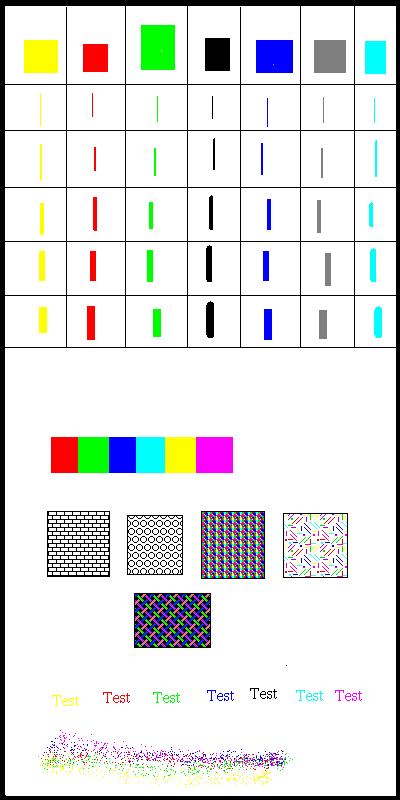
3D PLM Enterprise Architecture |
3D Visualization - Print |
Printing FilesCreating a paper output from your files |
| Use Case | ||
AbstractThis article shows how to print a given object on a printer. |
This use case is intended to show how to print a given object on a printer.
[Top]
CAAPrtPrintFile is a use case of the CAAPrint.edu framework that illustrates the Print framework capabilities.
[Top]
CAAPrtPrintFile is a batch program that reads a JPEG file from the command line and prints it on the chosen printer.
[Top]
To launch CAAPrtPrintFile Use, you will need to set up the build time environment, then compile CAAPrtPrintFile Use along with its prerequisites, set up the run time environment, and then execute the use case [1].
You can launch CAAPrtPrintFile using a JPEG file as argument. The use case lists the available printers and then type the number associated to the chosen printer, the input JPEG file is printed on the chosen printer.
E:>CAAPrtPrintFile InstallRootDirectory\CAAPrint.edu\CNext\resources\graphic\images\CAAPrtPrintFile.jpg |
$ CAAPrtPrintFile InstallRootDirectory/CAAPrint.edu/CNext/resources/graphic/images/CAAPrtPrintFile.jpg |
where:
InstallRootDirectory is the directory into which the CAA
CD-ROM were unloaded
CAAPrtPrintFile.jpg is the sample JPEG file supplied. You can
use other JPEG files you may have at hand. |
[Top]
The CAAPrtPrintFile use case is made of a several classes located in the CAAPrtPrintFile.m module of the CAAPrint.edu framework:
| Windows | InstallRootDirectory\CAAPrint.edu\CAAPrtPrintFile.m\ |
| Unix | InstallRootDirectory/CAAPrint.edu/CAAPrtPrintFile.m/ |
where InstallRootDirectory is the directory where the CAA CD-ROM
is installed.
[Top]
To print a JPEG file on aprinter, there are seven main steps:
| # | Step | Where |
|---|---|---|
| 1 | Displays the List of Printers | main |
| 2 | Asks the End User for a Printer Choice | main |
| 3 | Creates a Print File Image from the Input File | main |
| 4 | Creates a Printer Device | main |
| 5 | Defines Print Parameters | main |
| 6 | Prints the Image | main |
| 7 | Cleans the application | main |
The preliminary task that consist in retrieving the input file name from the
command line is not described. The input file name is retrieved from the command
line in the InputName variable, such as TestFile.jpg.
[Top]
As soon as the input file is retrieved, the list of available printers is displayed.
#include "CATPrintFileImage.h" // To create an image from the input file
#include "CATPrintParameters.h" // To define print parameters
#include "CATPrinterDevice.h" // To define a print device
#include "CATPrinterManager.h" // To retrieve the printer list
#include "CATPrinter.h" // To print
...
int main(int argc, char* argv[])
{
int ReturnCode = 0;
... // Retrieving the input file name is not described here
CATPrinterManager::Begin();
// Retrieves and displays the list of printers
cout << "Available printers: " << endl << endl;
for (int i=0; i<CATPrinterManager::GetPrinterCount(); i++)
{
CATPrinter printer = CATPrinterManager::GetPrinterFromIndex(i);
int old_width = cout.width(3);
cout.setf( ios::right );
cout << i+1;
cout.setf( ios::left );
//cout.width(old_width);
cout << " : " << (const char*) printer.GetDescription() << endl;
}
...
|
This printer manager is initialized using the static Begin
method. Then for each available printer, the printer description is retrieved
using the GetDescription method of the CATPrinter class, and
displayed, associated with its number. The static GetPrinterCount
method returns the number of available printers.
[Top]
The end user should now select a printer.
... CATPrinter printer = CATPrinterManager::GetPrinterFromIndex(printerIndex); CATPrinterManager::End(); ... |
The printer is selected using its index. This index is used to retrieve the
printer. As soon as this is done, the printer manager becomes useless and can
freed using the static End method.
[Top]
The print file image can now be built from the input file.
A print parameter object should be defined to be associated with the print file image to convert.
... CATPrintFileImage* image = new CATPrintFileImage(InputName, "JPEG"); ... |
This print file image is an instance of the CATPrintFileImage class instantiated from the input file. The input file format is passed as the second argument, here JPEG. The print file image created holds the input file in memory and the JPEG interpreter to enable the file interpretation as soon as this will be asked.
[Top]
The printer device should be next instantiated.
... CATPrinterDevice device( &printer ); ... |
The printer device is created using the selected printer as input. It is made of a generator for the printer format, and of of a stream into which the created file will be written.
[Top]
A print parameter object should be defined to be associated with the print file image to print.
... CATPrintParameters parameters; parameters.SetRotation( CATPRINTCCW_90 ); // Rotate the image parameters.SetMapToPaper(1); // Resize image to match paper format parameters.SetMargins(20.0, 20.0, 10.0, 10.0); // Set margins ... |
The print parameters are taken into account to create the printed output. The following parameters are set:
Other print parameters take their default values.
[Top]
The file conversoin can now take place.
... image->Print( &device, parameters ); ... |
The Print method converts the print file image from JPEG to the
printer format, usually PostScript, and prints the file using the parameters
set.
[Top]
... delete image; return ReturnCode; ... |
Simply don't forget to delete allocated objects, and return the appropriate return code..
[Top]
This use case shows the objects involved when printing a file, here encoded using JPEG, on a printer. These objects are the pinter manager, the printer, print file image, the printer device, and the set of parameters that are needed to print.
[Top]
| [1] | Building and Launching a CAA V5 Use Case |
| [Top] | |
| Version: 1 [Jan 2000] | Document created |
| [Top] | |
Copyright © 2000, Dassault Systèmes. All rights reserved.